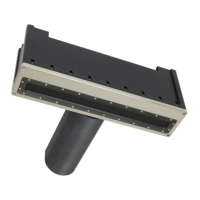5.4 Sensor Setup (Serial and Ethernet Interfacing)
The Sonar system receives various data, on the SIM serial ports or via the Ethernet. Select Settings |
Sensor setting to setup the communications parameters.
Figure 36: Sensor communication settings
5.4.1 GPS
The GPS input is for the ZDA time message ($GPZDA) or Trimble UTC message, other NMEA
messages may be in the same string; it is not necessary to isolate the ZDA or UTC. In the GPS
receiver’s operation manual, there will be an entry that will detail which edge of the PPS pulse is
used for synchronisation; this will be either synch on rising edge, or synch on falling edge. Selecting
the correct polarity is vital for correct timing.
The firmware supports the ZDA integer part (HHMMSS) and accepts PPS pulses if they pass a basic
stability test: the last two pulses must be within 200ppm. If the PPS is unstable or absent, the SIM's
internal trained clock-runs with a high degree of accuracy.
The decoded time, from the bathymetry packet, is visible in the main display on the lower left along
with the cursor position information. If the displayed time is 01/01/1970 it indicates that timing is
not set up correctly.
5.4.2 Motion
The motion data is used for roll stabilisation. There are two accepted formats. For serial input,
either the TSS1 or the iXSea $PHOCT format is accepted. The iXSea $PHOCT format is also accepted
via an Ethernet connection.
The motion data should be at the highest possible baud rate, with the motion sensor configured for
the highest output possible; at a minimum 100Hz update.
5.4.3 Heading
Not currently enabled.
Page 47 of 210
Version 5.0 Rev r002
Date 05-08-2014

